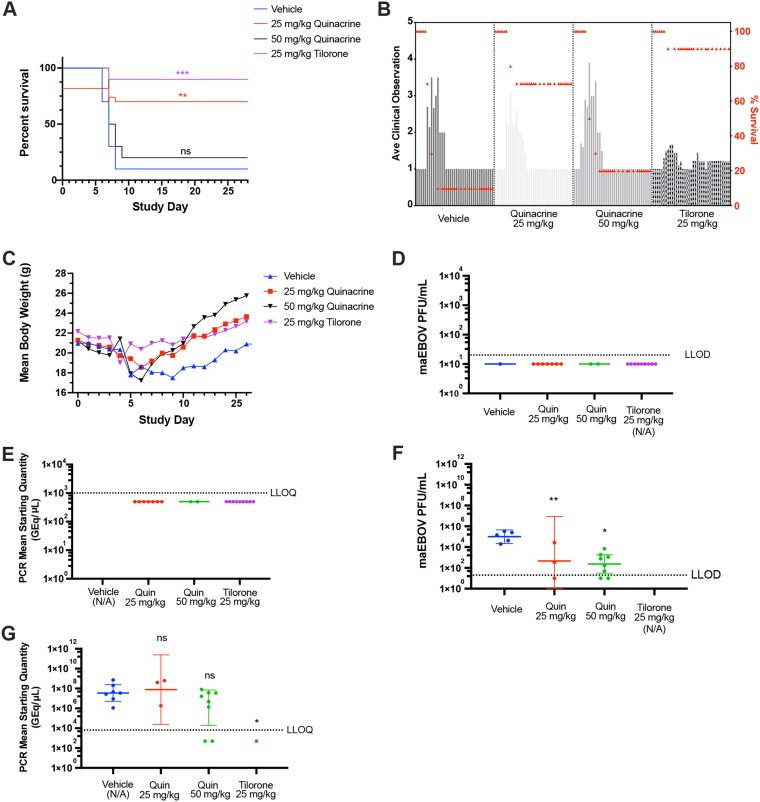FIG 2.
Efficacy of quinacrine against maEBOV in the mouse model. (A) The survival curves for the i.p.-dosed positive-control tilorone (25 mg/kg) and quinacrine test articles (25 and 50 mg/kg) were compared with that of vehicle control. The quinacrine 25-mg/kg and tilorone 25-mg/kg survival curves were statistically significantly different from vehicle using a log-rank (Mantel-Cox) test (P = 0.0040 and 0.0004, respectively). (B) Mean clinical scoring results with overlaid percent survival. (C) Mean body weight results. (D) Plaque assay for viable EBOV in serum samples by group (mice sacrificed at the end of study). (E) qRT-PCR measurement of viral RNA in serum samples by group (mice sacrificed at the end of study). (F) Plaque assay for viable EBOV in serum samples (mice sacrificed based on clinical score). Quinacrine 25- and 50-mg/kg doses were statistically significantly decreased compared with vehicle (Dunnett’s multiple-comparison test; adjusted P = 0.093 and 0.0016, respectively). (G) qRT-PCR measurement of viral RNA in serum samples (mice sacrificed based on clinical score). Results were not statistically significantly different from vehicle (Dunnett’s multiple-comparison test).

